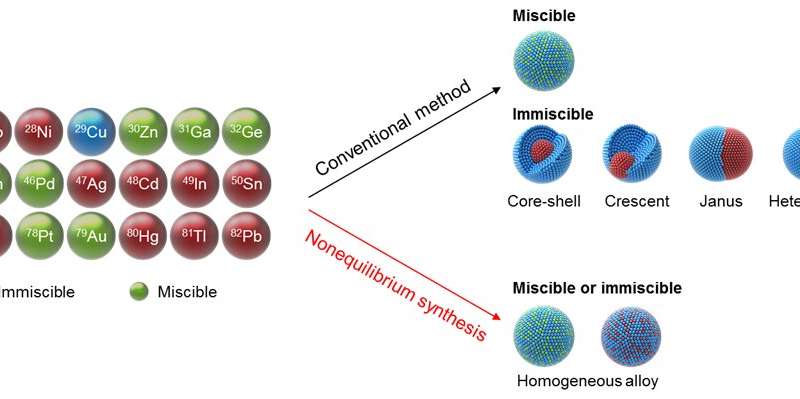The development of bimetallic nanoparticles (i.e.,
tiny particles composed of two different metals that exhibit
several new and improved properties) represents a novel area of
research with a wide range of potential applications. Now, a
research team in the University of Maryland (UMD)’s A. James Clark
School of Engineering has developed a new method for mixing metals
generally known to be immiscible, or unmixable, at the nanoscale to
create a new range of bimetallic materials. Such a library will be
useful for studying the role of these bimetallic particles in
various reaction scenarios such as the transformation of carbon
dioxide to fuel and chemicals.




